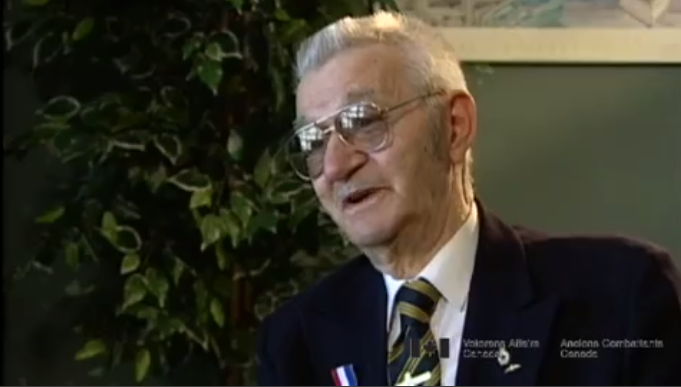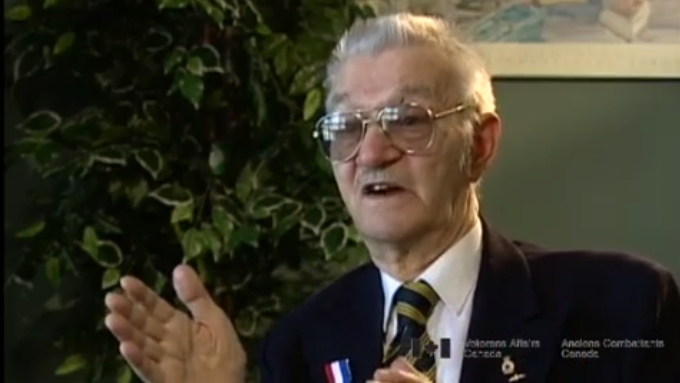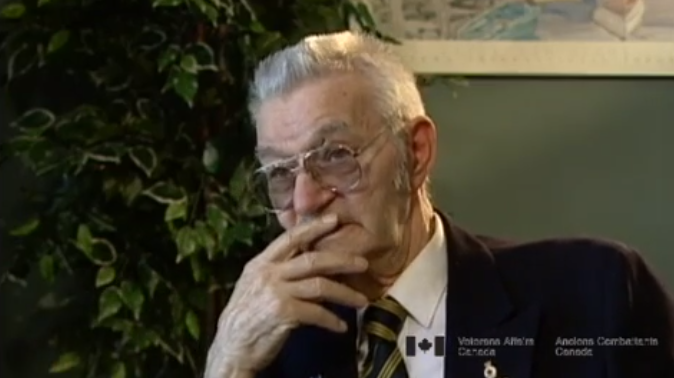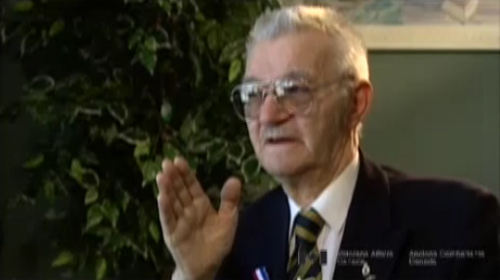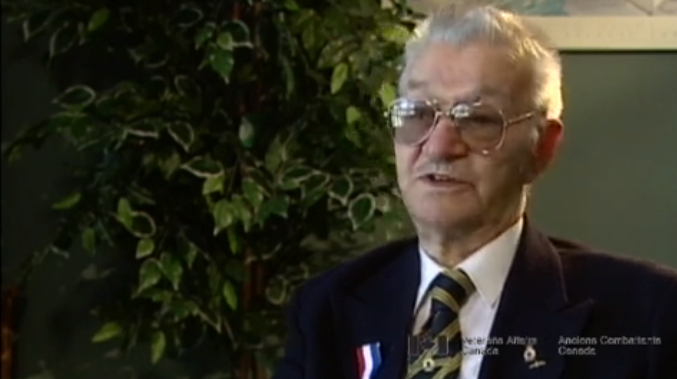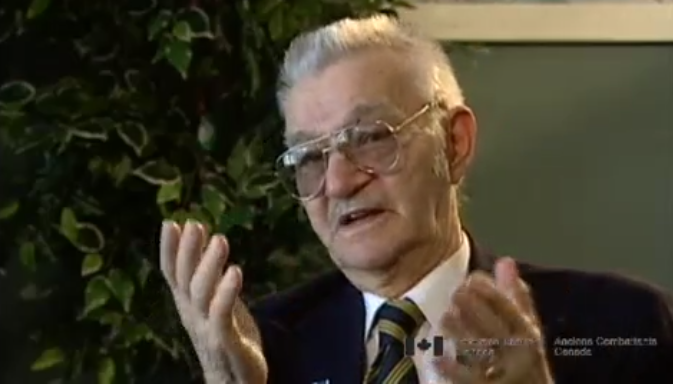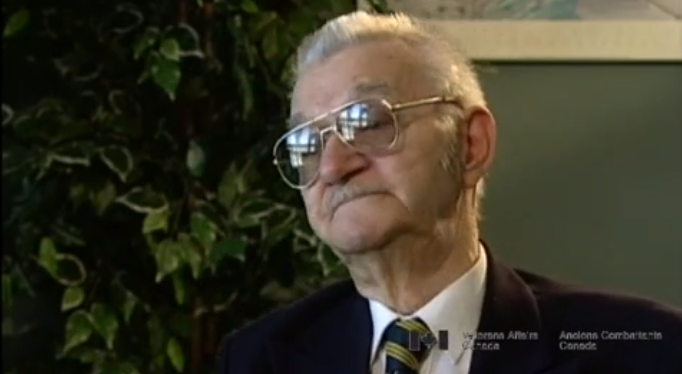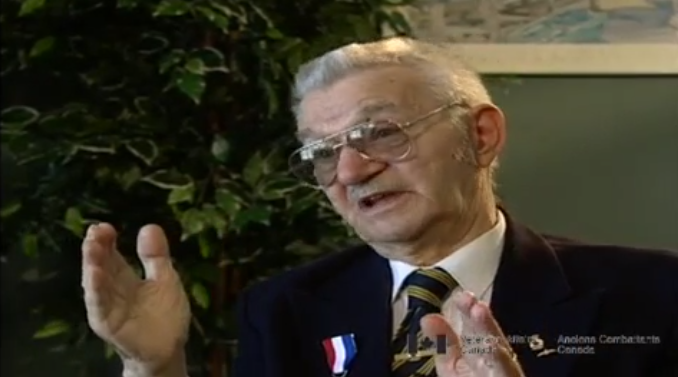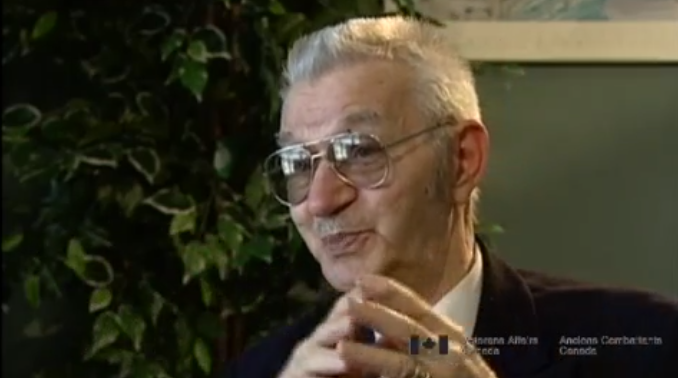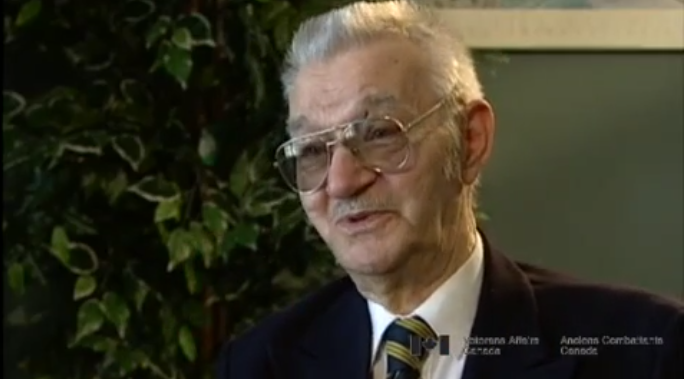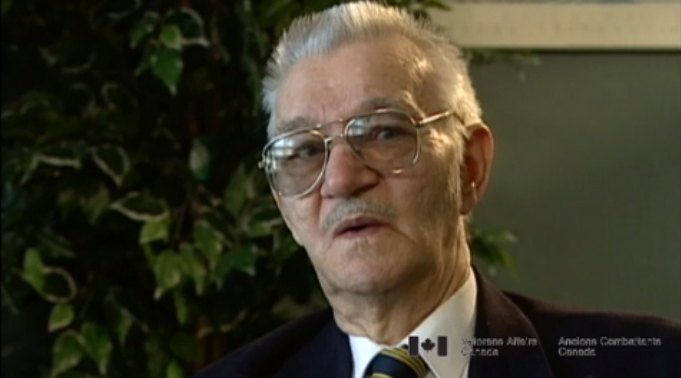D-Day Approach
Heroes Remember
D-Day Approach
Transcript
Description
Mr. Ducharme describes getting ready for D-Day and taking part in the pre-landing bombardment.
Paul Ducharme
Paul Ducharme was born in Montreal, Quebec in 1919. His family moved to Lorraine, Ontario where his father had a successful career with the Abitibi lumber company. Mr. Ducharme left home, penniless, at the age of thirteen. In the years leading up to his enlistment, he was employed as a trapper, a guide, a male poster model, and a mushroom picker. He enlisted in Ontario and volunteered for the new 19th Self-propelled Artillery Regiment being formed in Borden, Ontario. After shipping overseas on the Queen Mary, Mr. Ducharme took part in the D-Day invasion, landing at Juno Beach. He saw further action in France, Belgium and Holland. He was wounded by shrapnel in Holland and sent back to England. After leaving the service, Mr. Ducharme operated an auto body shop for 40 years.
Meta Data
- Medium:
- Video
- Owner:
- Veterans Affairs Canada
- Duration:
- 2:51
- Person Interviewed:
- Paul Ducharme
- War, Conflict or Mission:
- Second World War
- Location/Theatre:
- France
- Battle/Campaign:
- Normandy
- Branch:
- Army
- Rank:
- Gunner
- Occupation:
- Tank Driver
Related Videos
- Date modified:



